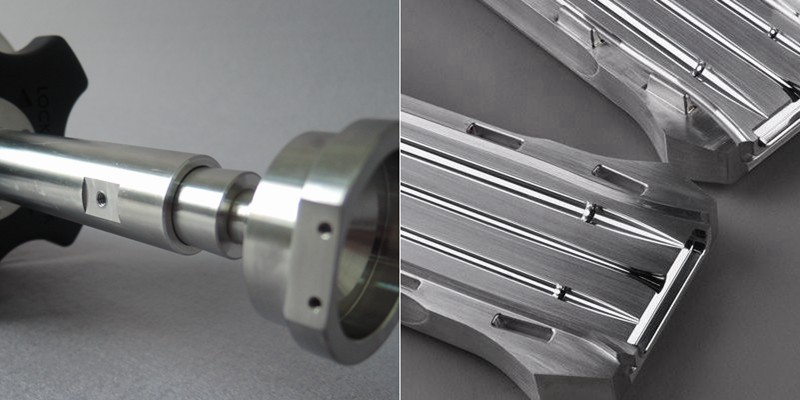- December 1, 2023
Aluminum’s versatility and unique characteristics make it suitable for applications requiring excellent strength to weight, good thermal/electrical conductivity, and corrosion resistance. However, your project may require specific aluminum finishes to ensure the parts match the intended application and design requirements. Therefore, it is essential to understand the common types of aluminum finishes to choose the one that best fits your projects.
This article discusses why your aluminum products need surface finishes, the types of finishes for aluminum, and considerations for effective aluminum finishing. Let’s get to it!
Why Do You Need Surface Finishing for Your Aluminum Products?
Surface finishing is the common use of aluminum products because it impacts the final product’s appearance, functionality, and durability. Manufacturers commonly employ various aluminum finishes to provide parts with a uniform and consistent coating with different colors.
These finishes for aluminum also improve electrical insulation properties, reflectivity, and resistance to wear. Aluminum coatings may also reduce friction between the aluminum surface and other surfaces, ensuring improved overall performance of the aluminum parts.
Additionally, aluminum surface treatment is critical in ensuring the corrosion resistance of aluminum products. However, poorly finished aluminum products with crevices and cracks can attract moisture and other contaminants, which can cause corrosion. As such, smooth and uniform aluminum finishes prevent contaminant accumulation, which can negatively affect the surface of aluminum products.
10 Types of Aluminum Finishes
Product designers and manufacturers employ different surface finishes for aluminum parts. There are various aluminum finishes, each with unique properties and practical use. Below are the typical types of aluminum finishes.
1. As Machined Finish
The as-machined finish is the original state of the machined aluminum part as it exits the mill. It doesn’t cost extra for surface finishing and is widely used for applications without mechanical or chemical finish requirements.
Aluminum CNC machining offers parts with a cleared machined pattern surface roughness range of Ra 0.2 – 3.2µm, depending on the application’s requirement. As-machined aluminum finishing meets tight tolerances accurately. However, your aluminum parts may show visible machine tool cutting marks.
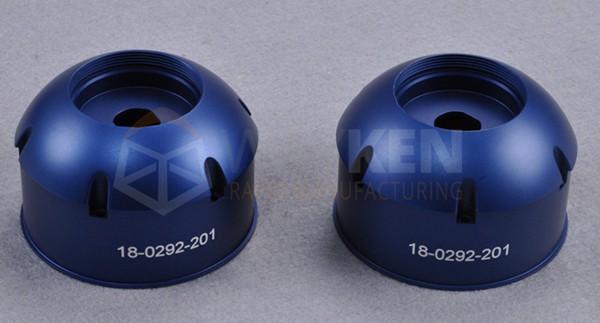
2. Anodizing
Anodizing is a commonly used surface treatment for aluminum profiles. It is an electrochemical process that converts aluminum surfaces into a durable, aesthetically appealing, and corrosion-resistant oxide layer. In addition, this aluminum finishing provides different coating thicknesses to achieve the desired benefits.
The anodizing process forms the protective layer on the material from the existing aluminum. As such, the oxide coating is firmly integrated into the aluminum material through a solid molecular connection.
Anodizing aluminum ensures aluminum products’ longevity with excellent corrosion and wear resistance. Additionally, aluminum anodizing provides better aesthetic appeal, allowing anodized parts to accept vibrant color options and maintain 4their appearance for a more extended period.
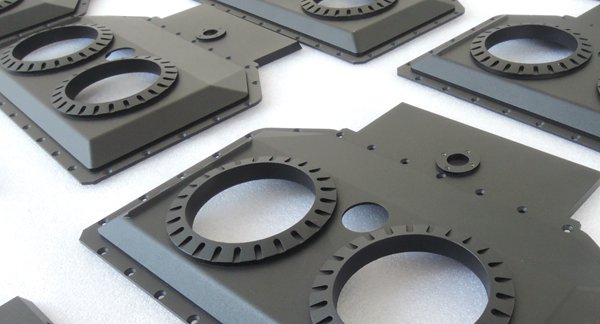
3. Powder Coating
Powder coating is the perfect aluminum surface finish if your products require a decorative and protective finish. It usually involves the application of a protective coating on the aluminum surface through an electrostatic process.
The powder particles pass through a special spraying gun, such as a corona spray gun, to make them negatively charged as they are applied to the earthed surface. As such, an electric field occurs between the electrostatic spray gun and the earthed aluminum component, making the sprayed powder adhere to the metal.
The aluminum and the coating develop a solid connection after curing. Powder coating is more environmentally friendly since it contains no solvents like wet paints. However, it may provide a slightly rough texture due to the visible texture of the used granules.
4. Alodine Finish (Chem Film)
Alodine finish or chem film is another aluminum surface finish suitable for passivating oxide film on aluminum products’ surfaces. It involves dipping the aluminum part in a controlled chemical bath for a specific duration while the alodine film develops on its surface.
This aluminum surface treatment is a cheaper alternative to anodizing. It provides improved corrosion resistance in aluminum machined parts. Although chem film is not as hard or resistant to wear as anodized coating, it is compatible with specific applications requiring high electrical conductivity.
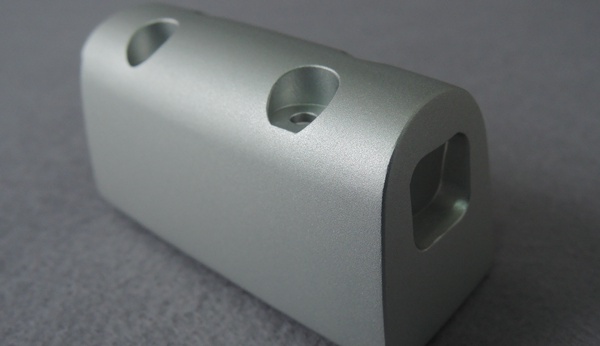
5. Bead Blasting
Bead blasting is one of the widely used mechanical finishes for aluminum. It involves using a bead blaster to blast abrasive media like steel beads or fine glass at high pressure against the aluminum products’ surfaces. The beads eliminate impurities from the aluminum surface, leaving a smooth, bright, and cleaner finish.
This surface treatment often gives your aluminum components a “satin” or “dull” finish. Bead blasting is one of the suitable aluminum finish options if your aluminum product requires a semi-polished and textured surface. It allows your material to retain its base color, providing a brighter surface finish.
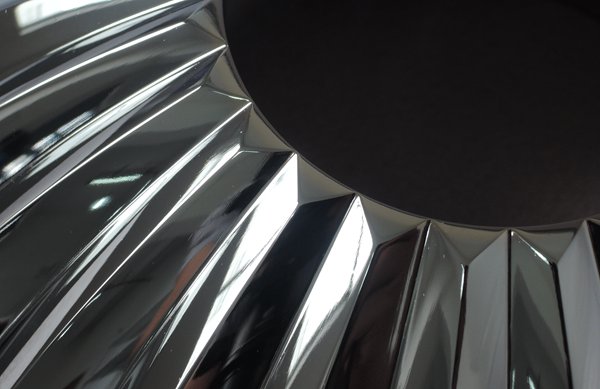
6. Electroplating
Electroplating is a type of aluminum finish in the manufacturing industry. It involves depositing a thin metal coating on the surface of another metal, such as aluminum, through electrolysis. The underlying material is the “substrate material,” while the added metal is called the “deposition metal.” Typical examples of deposition materials that can be plated include copper, silver, gold, nickel, titanium, zinc, and chromium.
The added layer improves aluminum materials’ chemical, mechanical, and physical properties, providing better electrical/thermal conductivity, strength, and resistance to UV light, abrasion, and corrosion. As such, you can add different metals to aluminum surface to achieve desired properties that match your intended applications.
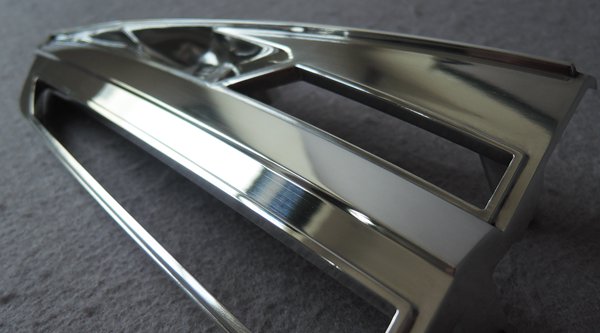
7. Polishing
Aluminum polishing is an ideal way to improve your aluminum products’ aesthetic appeal, functionality, and longevity. Metal polishing prevents the surface of aluminum components from contamination and oxidation, even though it tends to degrade over time due to exposure to elements like oxygen in the air, wear levels, and high temperatures. It creates a reflective surface to protect the aluminum surface from corrosive substances.
Polishing is suitable for custom aluminum parts due to its gleaming appearance. Typical applications of this aluminum surface treatment include medical equipment manufacturing, interior design, retail, and restaurant fittings.
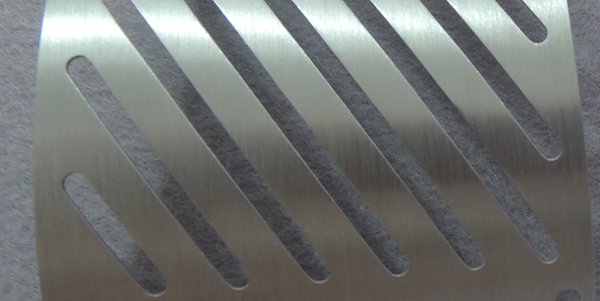
8. Brushing
Brushing is a mechanical aluminum surface finish that involves moving an abrasive brush over an extruded aluminum surface. This process is also called mechanical polishing. Brushing removes imperfections on the surface of aluminum and its alloys, making unidirectional lines with directions parallel to the direction of the brushing on the surface.
This aluminum surface finish provides a brushed look on aluminum metal for improved scratch resistance and appealing aesthetics. Brushing as an aluminum surface treatment provides aluminum products with an air of luxury. Brushed aluminum profiles are suitable for several indoor and outdoor aluminum components like aluminum household appliances.
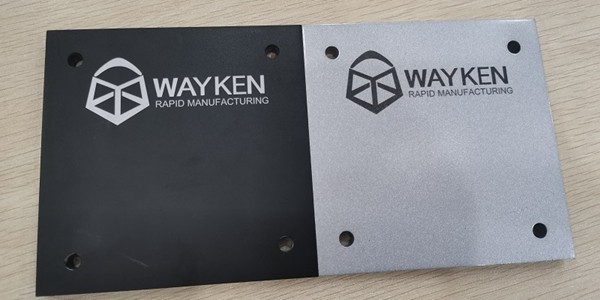
9. Laser Etching Aluminum
Laser etching aluminum is an effective marking technique for creating deep permanent marks or engraving on aluminum surfaces. The surface finishing provides precise results by concentrating a laser beam on the surface in a specified pattern to make detailed marks or cut through it.
This aluminum surface treatment applies to various industries, including aerospace, military, medical, industrial tooling, and automotive. Fiber lasers are standard for etching aluminum products since they offer quality marks exactly to design specifications.
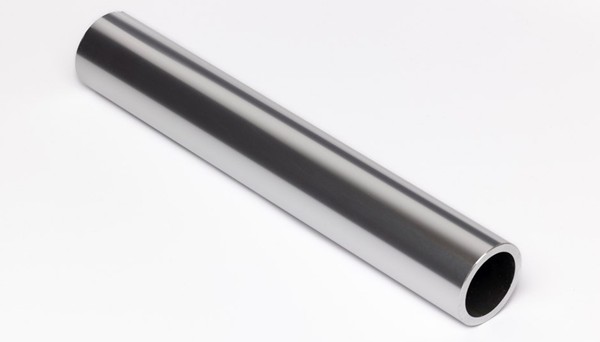
10. Bright Dipping
Bright dipping is an aluminum finishing process that creates brilliantly polished finishes for aluminum parts. It usually involves immersing aluminum profiles in acid to achieve a mirror-like finish through the microscopic fluctuations on the aluminum’s surface.
Certain aluminum products like food and beverage containment may require bright dipping due to its aesthetically pleasing finish. However, the chemicals involved in this aluminum surface treatment have potential risks and are incompatible with all aluminum alloys. Hence, it is best used with specific aluminum grades like 6463 aluminum alloy.
Different Surface Effects and Styles for Aluminum Finishes
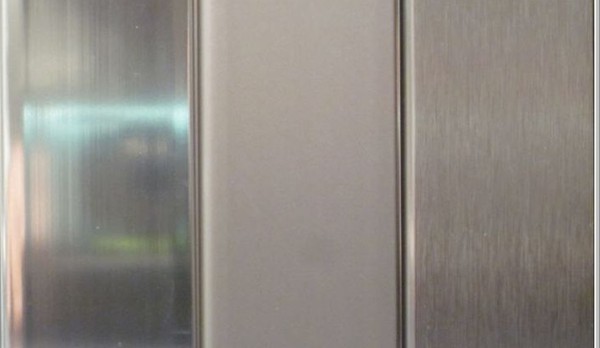
Aluminum alloys are highly customizable based on the requirements of the intended applications. Below are the different aluminum surface finish effects and styles used by product designers.
High Gloss
A high gloss finish gives a smoother, aesthetically appealing surface with impressive light reflectivity. High gloss finishes are usually shiny, irrespective of the color.
Aluminum polishing is one of the standard aluminum finish options that offer this high-gloss surface effect for aluminum automotive parts, architectural elements, and consumer electronics. Nonetheless, dust, fingerprints, and watermarks may be more visible on a high gloss finish than other finishes for aluminum.
Satin
Satin finishes provide a lightly glossed surface finish. Although it gives a lower reflectivity than a high gloss finish, it is usually smoother than matte. Hence, it is a suitable middle choice for aluminum parts without a preferred finish style. For instance, the brushed finish offers a satin-like finish for furniture and architectural designs.
Satin finish typically has a 72 GU gloss rating. It conceals flaws perfectly and allows easy cleaning. Besides, the satin finish doesn’t retain fingerprints or watermarks as in high gloss.
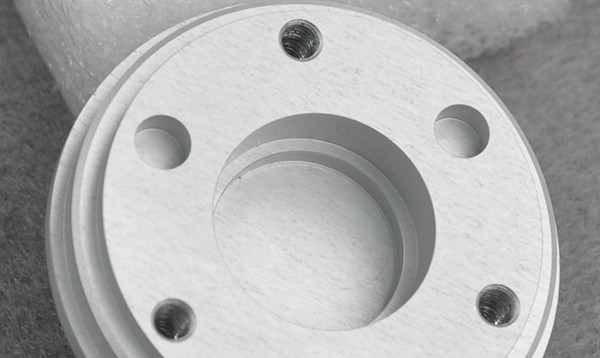
Matte
This aluminum surface finish style gives a dull and non-reflective appearance with a 30 GU score of gloss rating. It conceals watermarks and fingerprints well and is less expensive since it doesn’t need many layers of coatings. You can achieve a matte finish for your aluminum parts and components with finishes like anodizing and powder coating.
Matte finishes are durable, tarnish-resistant, and can be easily cleaned. Besides, it may appear less polished than glossy or satin finishes since it is not shiny.
Metallic
A metallic finish provides aluminum products with a feeling of luxury. This aluminum finish style offers low reflectivity compared to a high gloss finish. Brushed or clear anodizing provides a metallic surface finish for aluminum products like decorative metal parts, nameplates, and signage.
You can also tint this metallic finish to look like brass, copper, gold, stainless steel, and silver. Although metallic finishes are more likely to retain watermarks and fingerprints, they are aesthetically pleasing and easy to clean.
Factors to Consider in Choosing an Aluminum Surface Finish
Aluminum finish options are important in enhancing machined parts’ function and aesthetic appeal. As such, this section discusses helpful considerations for choosing the suitable aluminum surface finish for your products.
Intended Application
Find out if the aluminum parts are intended for outdoor or indoor use. Aluminum products designed for exterior applications usually require a specific surface treatment that resists UV radiation, corrosive substances, and temperature changes.
Besides, it would help to use an aluminum surface finish such as anodizing, electroplating, or alodine finish that guarantees chemical resistance if the product is exposed to corrosive elements. Also, you must identify if the aluminum components will be exposed to considerable wear and tear, like impact or abrasion.
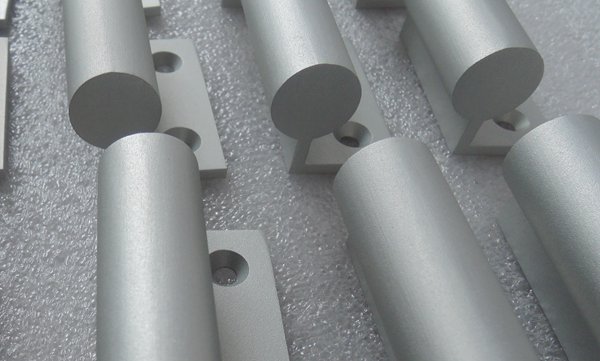
Desired Aesthetics
Consider your aluminum parts’ aesthetic requirements to determine the ideal aluminum surface finish that matches the demands perfectly. Several aluminum finish options provide the desired visual appeal with a wide range of color, texture, and gloss levels.
For example, aluminum parts with a mill finish often possess a dull appearance with visible tooling marks. However, you can provide your CNC aluminum parts with a mirror-like finish, like bright dipping. Similarly, some finishes for aluminum may offer variations in colors and textures based on the requirements of your projects. Therefore, examine the desired aesthetics of the intended application to choose a suitable surface finish.
Cost Implications
It is advisable to consider the limits of your budget as you choose an aluminum surface treatment for your products because the upfront costs of finishes for aluminum vary considerably. Therefore, ensure you select a finish that fits your project’s budget.
It would be best to consider the overall cost of ownership, maintenance, and likely part replacement costs. However, picking a more durable finish may help to make up for the high initial costs if it lessens the long-term expenses.
Durability and Maintenance
It would help to evaluate the expected lifespan of the aluminum components when choosing a finish that offers the preferred longevity. For example, you can ensure the extended lifespan of aluminum components with anodizing processes.
Moreover, it is best to determine the level of maintenance that a particular aluminum surface finish will require when considering the right one for your project. Aluminum finish options like powder coating require low maintenance. In addition, electroplating aluminum finishes are easy to clean.
Need Surface Treatments for Your Aluminum Parts?
WayKen is the right manufacturing partner whenever you need surface treatment services for your aluminum parts. We offer different aluminum finishes, including anodizing, polishing, powder coating, brushing, etc, for your products at affordable prices.
In addition to our surface treatment expertise, we also provide reliable manufacturing processes, such as CNC machining, 3d printing, die casting, rapid tooling, and sheet metal manufacturing. Our team will work closely with you to understand your project requirements, ensuring that the production and surface treatments are applied with precision and consistency. Contact us today!
Conclusion
While there are several options on the surface finish chart, aluminum finishes are ideal for elevating your product by improving aesthetic appeal, quality, and durability. Each aluminum surface treatment offers its advantages and is suitable for any aluminum profile. Moreover, your choice of aluminum surface finish determines the product’s lifespan, corrosion resistance, and other factors that affect the functionality of your parts.
FAQs
What aluminum surface treatment is the best?
Although each aluminum finish offers unique benefits, aluminum anodizing provides incredibly durable protection for your parts. It protects your aluminum products from corrosion, and wear, ensuring they maintain their aesthetic appeal for longer.
Which surface finishing is ideal for preventing rust in aluminum parts?
Several aluminum finishes, including anodizing, painting, or any other surface finishing that develops a coating on the aluminum surface, are suitable for protecting the surface of aluminum parts from pitting or rust.

